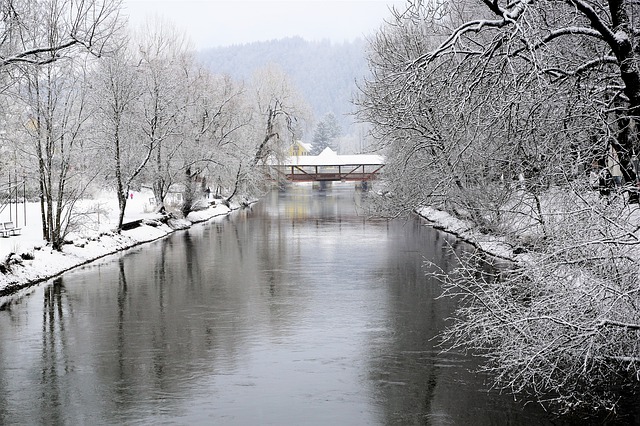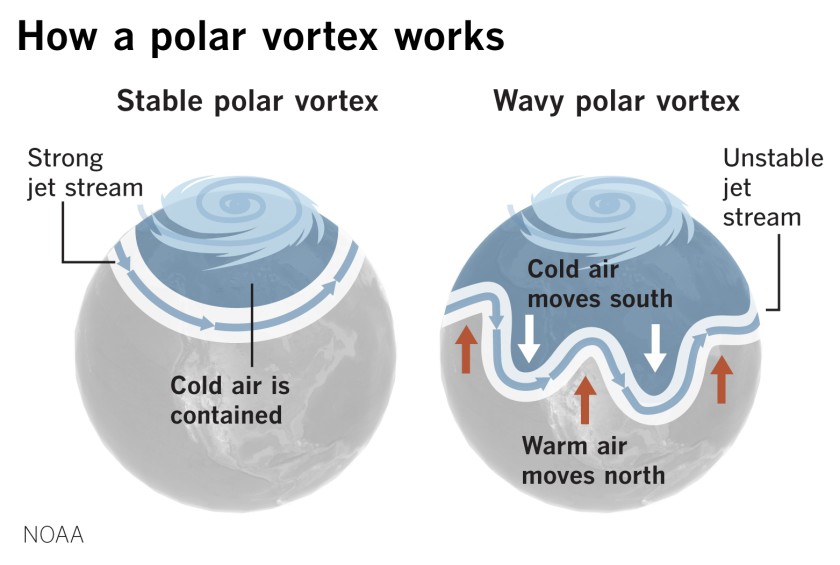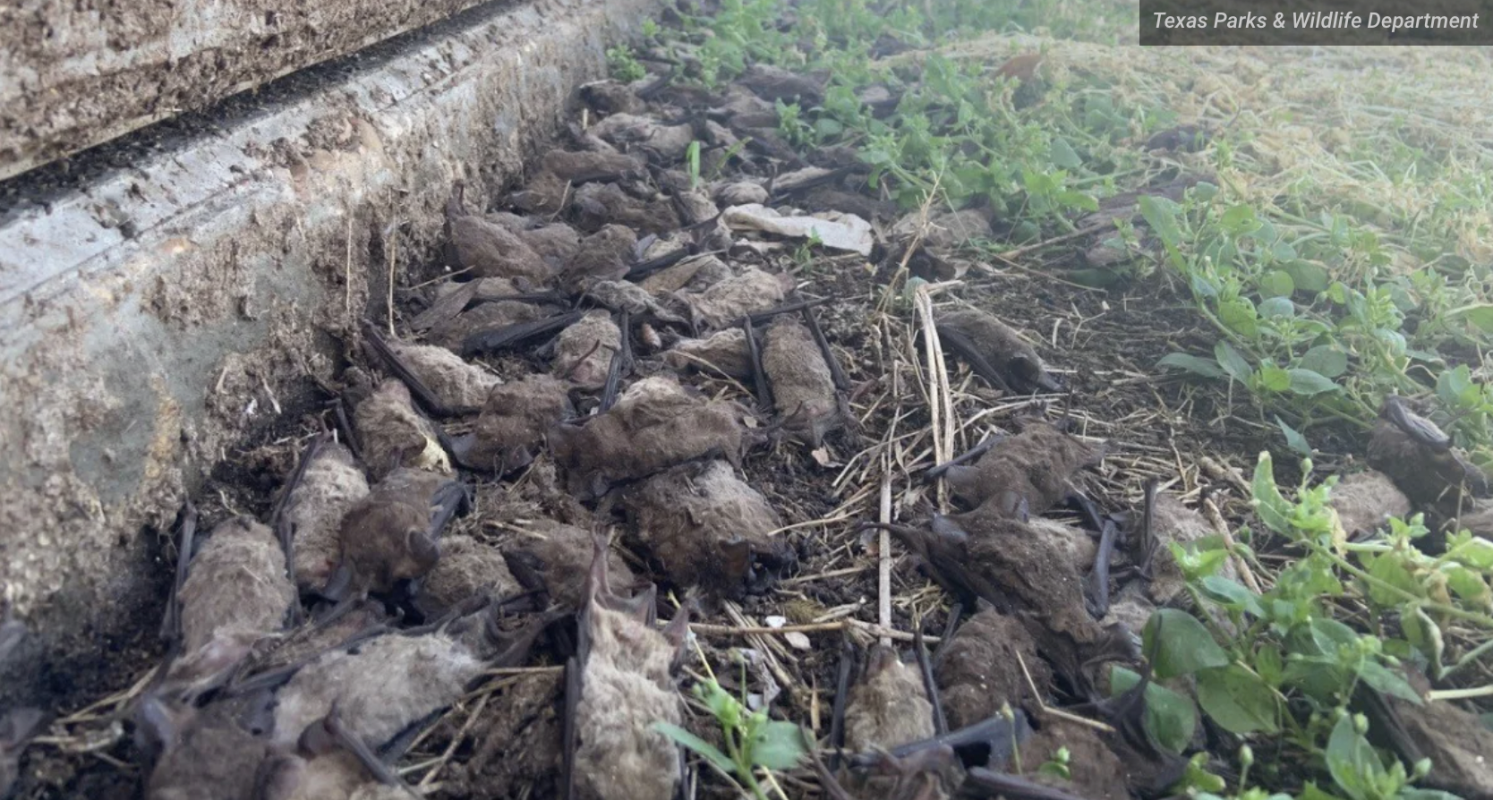 After experiencing above-normal temperatures, many people in the US were hit with a sudden snap of cold.
After experiencing above-normal temperatures, many people in the US were hit with a sudden snap of cold.
As a shift in the polar vortex swept across much of the country, states from Texas to Tennessee were hit in spectacular fashion.
Heavy ice and snow coupled with fallen trees caused power outages in major cities such as Dallas and Austin, with companies unable to tell their customers when power will be restored. But what are polar vortices, and how do they affect us?
What is a Polar Vortex?
Polar vortices were noticed long ago. According to the National Oceanic and Atmospheric Administration (NOAA), the first known use of the term “polar vortex” was in a weekly magazine in 1853.
 According to Weather.gov, polar vortices are present year-round, but we don’t hear about them until they cause problems. They maintain freezing temperatures at the North and South poles by moving in tight counter-clockwise patterns. Polar vortices grow stronger in winter and weaken in summer. They are kept in place at the poles by another atmospheric current called the jet stream.
According to Weather.gov, polar vortices are present year-round, but we don’t hear about them until they cause problems. They maintain freezing temperatures at the North and South poles by moving in tight counter-clockwise patterns. Polar vortices grow stronger in winter and weaken in summer. They are kept in place at the poles by another atmospheric current called the jet stream.
However, when the jet streams weaken, the cold winds of the polar vortex are pushed southwards and it is during this time that people begin to pay attention! For more information on polar vortex patterns, check out this article.
How the Polar Vortex Affected Texas Residents
The storm wreaked havoc in the affected areas. More than 390,000 homes lost power as ice-laden trees collapsed onto power lines. Roads froze over, causing six traffic deaths, and many schools were shut-down. Nearly half of the more than 1300 flights grounded were from Texas airports.
People are not the only Earthlings to struggle with the cold. Crops and animals are also freezing. This could have major consequences, especially if herds of cattle die. If snow blocks cattle, the animals can’t reach basic necessities like food, shelter, and fresh water. Ranchers are really having to work to keep their animals alive.
 Other creatures are also being affected by the chilly temperatures. Bats in Houston fell 30 feet from their nests under bridges, with some not surviving the drop. The 1000-plus bats that pulled through were collected and taken to the home of Mary Warwick, the wildlife director of the Houston Humane Society. After they are nursed back to health, Ms. Warwick plans to release the bats to their natural habitat.
Other creatures are also being affected by the chilly temperatures. Bats in Houston fell 30 feet from their nests under bridges, with some not surviving the drop. The 1000-plus bats that pulled through were collected and taken to the home of Mary Warwick, the wildlife director of the Houston Humane Society. After they are nursed back to health, Ms. Warwick plans to release the bats to their natural habitat.
With all of the devastation that this storm caused, the Texas power grid was not to blame for the outages. Texas Gov. Greg Abbott assured Texans that fallen trees and snow were the perpetrator in this instance.
Looking Ahead
On a brighter note, some Texas cities were more prepared than others. For instance, Amarillo, TX provided a model for dealing with freezes. Amarillo is located in North Texas, so they are more accustomed to colder temperatures than southern cities.
Amarillo is notable because the city was redesigned to withstand severe winter storms. Officials have spread out fire stations to increase coverage of first responders, employed modified dump trucks for clearing ice, and upgraded civic centers to provide shelter during storms. Hopefully, other Texas cities will follow the good example set by Amarillo!
Sources: Weather.gov, NY Times, NPR, NOAA, Texas Tribune








